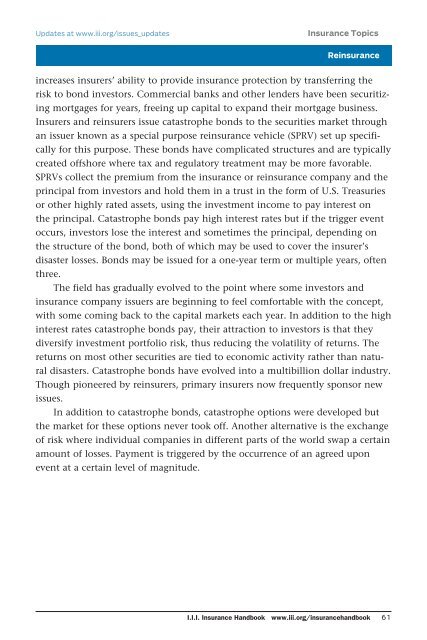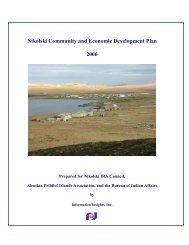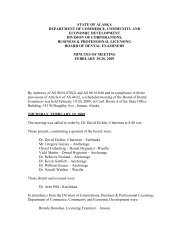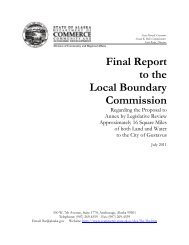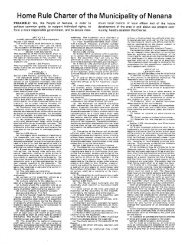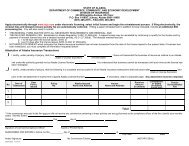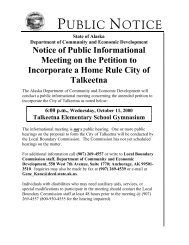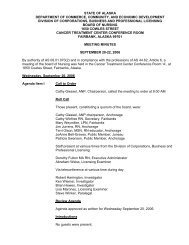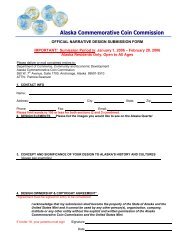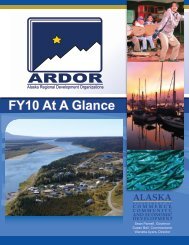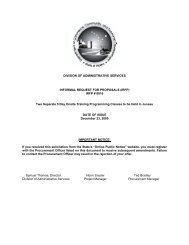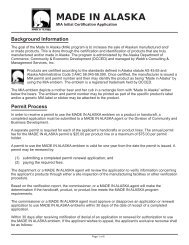Insurance Handbook - Alaska Department of Community and ...
Insurance Handbook - Alaska Department of Community and ...
Insurance Handbook - Alaska Department of Community and ...
Create successful ePaper yourself
Turn your PDF publications into a flip-book with our unique Google optimized e-Paper software.
Updates at www.iii.org/issues_updates <strong>Insurance</strong> Topics<br />
Auto Reinsurance<br />
<strong>Insurance</strong><br />
increases insurers’ ability to provide insurance protection by transferring the<br />
risk to bond investors. Commercial banks <strong>and</strong> other lenders have been securitizing<br />
mortgages for years, freeing up capital to exp<strong>and</strong> their mortgage business.<br />
Insurers <strong>and</strong> reinsurers issue catastrophe bonds to the securities market through<br />
an issuer known as a special purpose reinsurance vehicle (SPRV) set up specifically<br />
for this purpose. These bonds have complicated structures <strong>and</strong> are typically<br />
created <strong>of</strong>fshore where tax <strong>and</strong> regulatory treatment may be more favorable.<br />
SPRVs collect the premium from the insurance or reinsurance company <strong>and</strong> the<br />
principal from investors <strong>and</strong> hold them in a trust in the form <strong>of</strong> U.S. Treasuries<br />
or other highly rated assets, using the investment income to pay interest on<br />
the principal. Catastrophe bonds pay high interest rates but if the trigger event<br />
occurs, investors lose the interest <strong>and</strong> sometimes the principal, depending on<br />
the structure <strong>of</strong> the bond, both <strong>of</strong> which may be used to cover the insurer’s<br />
disaster losses. Bonds may be issued for a one-year term or multiple years, <strong>of</strong>ten<br />
three.<br />
The field has gradually evolved to the point where some investors <strong>and</strong><br />
insurance company issuers are beginning to feel comfortable with the concept,<br />
with some coming back to the capital markets each year. In addition to the high<br />
interest rates catastrophe bonds pay, their attraction to investors is that they<br />
diversify investment portfolio risk, thus reducing the volatility <strong>of</strong> returns. The<br />
returns on most other securities are tied to economic activity rather than natural<br />
disasters. Catastrophe bonds have evolved into a multibillion dollar industry.<br />
Though pioneered by reinsurers, primary insurers now frequently sponsor new<br />
issues.<br />
In addition to catastrophe bonds, catastrophe options were developed but<br />
the market for these options never took <strong>of</strong>f. Another alternative is the exchange<br />
<strong>of</strong> risk where individual companies in different parts <strong>of</strong> the world swap a certain<br />
amount <strong>of</strong> losses. Payment is triggered by the occurrence <strong>of</strong> an agreed upon<br />
event at a certain level <strong>of</strong> magnitude.<br />
I.I.I. <strong>Insurance</strong> <strong>H<strong>and</strong>book</strong> www.iii.org/insuranceh<strong>and</strong>book 61


